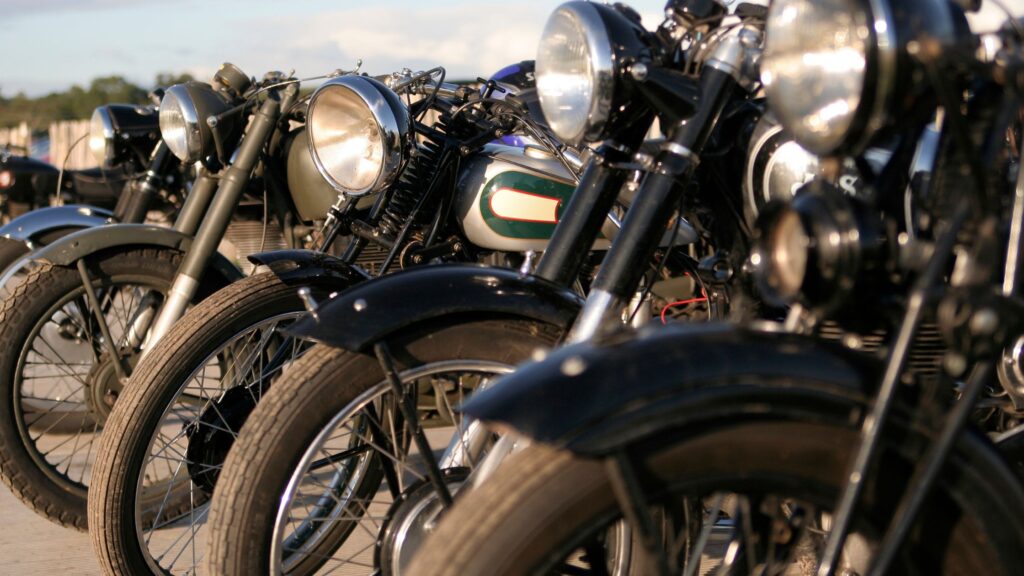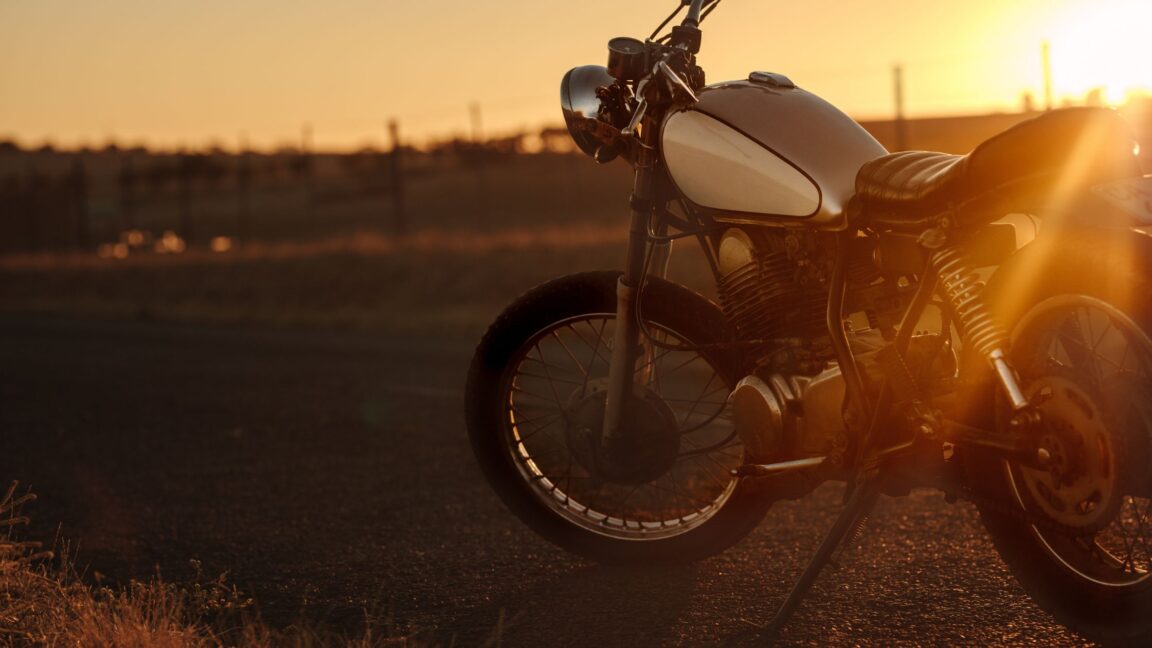Motorcycles are extremely amazing and iconic vehicles. They’re equally basic and sophisticated, mechanical interpretations of form meeting function and full of attitude. Some motorcycles are more noticeable than others. Between two tires, there are endless permutations of weapons-grade speed, beauty, design, and freedom. There are icons that I have hand-picked as my favorite bikes ever created. The most unique, iconic motorcycles. Let’s get this party started!
Harley-Davidson XR750
The XR750 is an example of more than the total of its parts, as it is a parts-bin special cobbled together to suit changing AMA dirt-track requirements. After years of dominance, Harley Davidson’s racing department was compelled to reconsider its efforts for the 1970 season.
So they achieved it in less than a year, creating the most successful race bike in AMA history. Fortunately, homologation requirements required that 200 race-ready road-goers be made accessible to the general public, and thus a legend was born. The fact that a man with the unusual name “Evel” chose the XR750 further added to its attractiveness.
Honda CB750
Honda presented the transverse-mounted, inline-four-cylinder engine to the general public in 1969. The CB750, widely regarded as one of the first real “superbikes,” was the game-changing product of Soichiro Honda’s obsession with breaking into the American market.
Thanks to its race-proven inline-four configuration, the CB750 could easily and comfortably surpass 120 mph, providing exceptional value for money. Another widespread first that transformed the motorcycle business was front-mounted disc brakes. The icing on the cake was the electric start, kill switch, overhead camshaft, and ease of maintenance.
Ducati 900SS
Ducati produced the 864cc “square case” powered 900 Superlight to compete in the Japanese-dominated supersport market in the 1970s. The larger Desmodromic L-twin, which resembled the formidable 750 SS that Paul Smart rode to victory in Imola, was an instant success. The ’78 model would also win the renowned Isle of Man TT before graciously retiring at the top of its class. Ducati enthusiasts consider the 1978 model the most desired, thanks to its modified shifter (now on the left side of the bike) and traditional spoked wheels.
Indian Chief, 1940
For the first time, a sprung frame was used to build the ’40 Indian Chief, which comfortably outperformed Milwaukee’s best in ride and handling. The appearance of India’s iconic fenders truly set tongues wagging. The flowing skirted fenders seen on the Chief were more than just plain steel slices. They gave the bike an immediate posture and presence that was unquestionably magnificent. More than 60 years after the last real Chief rolled off the assembly line, a new breed has emerged, and they’re not half bad.
Royal Enfield Bullet
With 83 years under its belt, the Royal Enfield Bullet has the world’s longest production run. That alone merits iconic status. The first Bullet was shot in the land of tea and crumpets in 1931, with an overhead valve, single-cylinder 350cc engine that quickly made its way into the British Army and Royal Air Force. The Bullet’s basic design and surefooted performance earned it wartime honors and made it a civilian stalwart. Although production has shifted to India, the Bullet has remained practically unchanged: “Made like a gun, goes like a bullet.”
Triumph Twin Speed, 1937
Edward Turner’s Triumph Speed Twin could go down in history as the most influential motorcycle ever created. The 500cc parallel-twin put more power into a smaller and narrower compact than the current crop of single-cylinder thumpers. Every competitor’s model would have a variation of this engine within a decade. The original’s gold pinstriping and Amaranth red paint made the mechanicals stand out, while the fuel tank design set a precedent that is still followed today. The bike that insured Triumph’s survival after WWII would later grow into the Bonneville, another legend on my list.
Harley-Davidson WL
The V-Twin engine is synonymous with Harley-Davidson. Their Flathead-powered WL cycle sealed the Bar and Shield’s iconic prominence at home and abroad. Knuckleheads, Panheads, and Shovelheads are all early manifestations of the Motor Company’s ongoing commitment to the ubiquitous 45-degree power plant.
The WL was Harley-contribution Davidson to World War II, with around 90,000 bikes enrolled for American field duty alone. Soldiers from Canada, the United Kingdom, South Africa, and Russia came to know and love the WL, and many wanted to take them home after their tour. This flood of newly released Hogs is responsible for the tremendous expansion in motorcycle culture that America (and the rest of the globe) would embrace and revere for the following 75 years.
Honda CB77
Honda’s first sportbike was the CB77, also known as the Superhawk. The CB77’s 305cc parallel twin could effortlessly rev to nine grand and easily send riders over “the tonne” (a.k.a. 100 mph). The frame was made of tubular steel rather than pressed steel, with the motor serving as a stressed part to save weight and make the CB77 extremely flickable. Honda’s dependability created and solidified the Japanese manufacturer’s reputation in the Western world.
Ducati PS1000LE
The Ducati PS1000LE, created to celebrate Paul Smart’s first-place finish in Imola on his 1972 Ducati 750SS, is the most beautiful way to pay tribute to someone. The Paul Smart model, based on their Sport Classic line, pushed Pierre Terblanche’s design to the next level. The traditional bubble-shield front fairing, wire-spoked wheels, and green trellis frame contrast with the ultramodern Ohlins suspension and wide Pirelli tires. The PS1000LE, produced in limited numbers and just for one year, may be one of the most collectible Ducatis ever constructed.
BMW R60/2
The R60 was BMW’s go-anywhere, do-anything tourer of the 1960s, and it was on the market for 13 years. Originally intended for sidecar duties, the combination of a punchy flat twin and Earle’s fork design resulted in a very capable bike on and off the road. The R60 was so powerful that rider Danny Liska took it on a 95,000-mile journey from the Arctic Circle to the end of South America. Then he resolved to pave the way for Boorman and McGregor by trekking from Northern Europe to South Africa’s Cape of Good Hope — without a support team, satellite phone, GPS, or foreign fixers.

Conclusion
I hope you liked my list of classic motorcycles of all time. Out of these, my favorite bike is Royal Enfield Bullet. Comment below the bike you like, whether it is on the list or not! I would like to hear about your favorite vintage or modern bike.



